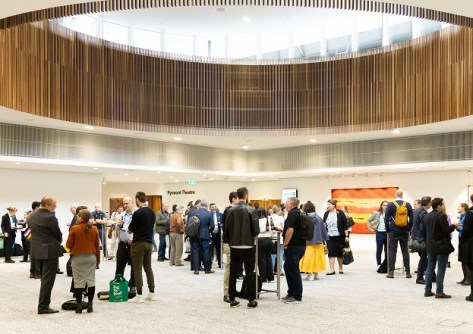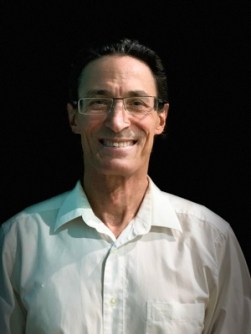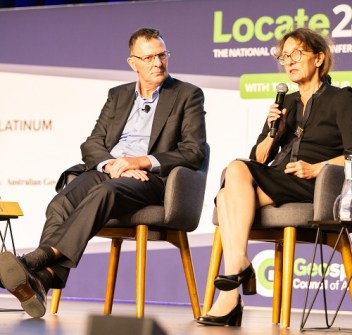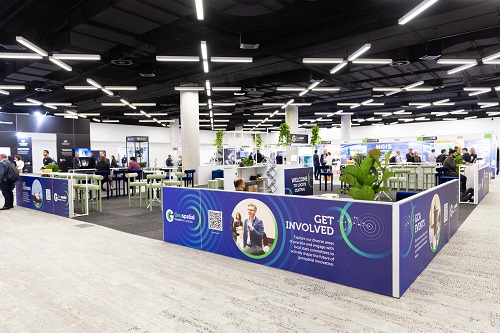
Upwards of 2,000 people are expected to attend the combined FIG Working Week 2025 and Locate25 conferences in Brisbane in April.
By Jonathan Nally
The eyes of the geospatial world will be on Brisbane in April this year, as thousands of local and international professionals take part in the combined Locate25 and International Federation of Surveyors (FIG) Working Week 2025 conference and exhibition.
While the Geospatial Council of Australia’s Locate conference is well known to those in the Australasian region, FIG and its annual event perhaps are a little less familiar. Founded in 1878, FIG is an international non-government organisation, the membership of which includes national geospatial associations, government surveying and mapping agencies, research organisations, private companies and individuals.
Unlike many geospatial bodies and agencies with which Australian readers will be familiar — which sometimes tend to focus more on the technical aspects the field — FIG has a strong focus on land administration and sustainability issues that affect people across the globe.
Australia has a strong track record of involvement with FIG, having previously hosted FIG congresses in Melbourne in 1994 and Sydney in 2010, and Australians have held, and continue to hold, senior positions as chairs of commissions.
The theme for the 2025 event is ‘Collaboration, innovation and resilience: Championing a digital generation,’ and overall it is expected that almost 2,000 attendees will be attracted from more than 80 countries. There will be more than 70 speaker sessions, and dedicated networking opportunities and extensive exhibition floor that will provide plenty of opportunities for doing business and meeting new people.
The event’s Convenor is Steve Jacoby, Executive Director, Spatial Information at Department of Resources (Queensland). Jacoby has 23 years’ experience as a Senior Executive with the Queensland and Victorian Governments, leading their spatial information businesses.
The Chair of the Local Organising Committee is Peter James, a geospatial professional with Cohga, an Australian geospatial systems and integration company. Interestingly, Peter is a third-generation surveyor; his father, Earl James, was the 20th President of FIG from 1992 to 1995, and the first person from the Southern Hemisphere to hold that role.

We spoke with Peter James to find out more about what we can expect from the event and why it is so important to be there.
How are plans progressing?
Plans are progressing very well, and this event is set to be a cornerstone for the geospatial community, both locally and globally. The unique combination of FIG’s international reach and Locate’s strong local foundation, is creating a dynamic program that promises something for everyone — whether you’re focused on innovation, collaboration or tackling the pressing challenges of our time.
Coordinating an event of this scale is no small task. The Local Organising Committee (LOC), in close partnership with the FIG Committee, has been working hard over the past year to integrate the strengths of both conferences. We’re well on track with securing an impressive lineup of keynote speakers, curating a robust technical program, and locking in a variety of social and technical tours designed to showcase Australia’s geospatial expertise and Brisbane’s vibrant culture.
From engaging panel discussions to interactive workshops, gala dinners, and networking opportunities, every element is being carefully planned to ensure an enriching and memorable experience for delegates.
This is more than just a conference — it’s a platform for fostering meaningful connections, driving innovation, and championing the resilience of the geospatial profession in an increasingly digital world.
What are some of the topics to be covered?
This conference presents an incredible opportunity to delve into how the geospatial profession is addressing some of the most pressing societal, environmental, and economic challenges of our time. I’m particularly interested in exploring the role of geospatial technologies in building climate resilience — how they’re being used to predict, prepare for and respond to natural disasters, as well as accelerate recovery efforts in communities around the world.
Equally fascinating is the transformative impact of these technologies on industries such as mining, agriculture, and transportation. By improving efficiency, optimising resources and driving innovation, geospatial tools are becoming critical drivers of national productivity and economic growth.
Another area close to my heart is the social impact of geospatial innovation, particularly in empowering Indigenous communities. Geospatial technologies are increasingly being used to support land rights, preserve cultural heritage, and strengthen the connection between identity and place — conversations that resonate deeply in both local and global contexts.
What are you most looking forward to?
One of the aspects I’m most excited about is the opportunity to showcase Brisbane and Australia to a global audience. Brisbane’s unique combination of vibrant culture, stunning natural landscapes, and cutting-edge industry makes it the perfect host city for an event of this magnitude. I’m particularly eager to highlight how Australian innovation is driving advancements in the geospatial sector, demonstrating our capability to lead and inspire on the global stage.
Another highlight will undoubtedly be the chance to meet and connect with colleagues from across the world. Engaging with professionals from diverse backgrounds and hearing their insights will offer a fresh perspective on the challenges and opportunities we face as a profession. These exchanges often spark new ideas and collaborative possibilities that can have a lasting impact.

I’m also looking forward to discovering the latest technologies, processes and innovations in the field. Understanding how these advancements are being applied to solve real-world problems — and witnessing their tangible benefits — is always a source of inspiration and motivation.
Finally, this event represents an invaluable opportunity to build and strengthen my professional network. Conferences like this are a melting pot of expertise, and the relationships formed here have the potential to evolve into long-term collaborations that drive progress for years to come.
What are the opportunities for Australian professionals?
It presents an extraordinary opportunity to engage with the global geospatial community and gain a broader perspective on how our profession is making a meaningful difference worldwide. It’s a chance to see firsthand how geospatial technologies and expertise are being leveraged to address critical issues — enhancing the health and well-being of our planet and communities across the globe.
From a local perspective, the event provides a unique platform to expand professional networks and explore new business opportunities. It’s a rare occasion to connect with international experts, exchange ideas, and learn from the diverse experiences of colleagues from around the world.
What about for visiting overseas professionals?
This event offers Australian professionals an opportunity to showcase our nation’s reputation for innovation and excellence in the geospatial field. By highlighting our cutting-edge technologies, forward-thinking solutions, and remarkable achievements, we can demonstrate Australia’s leadership on the global stage and inspire new collaborations that will shape the future of our profession.
Australia is recognised for its forward-thinking solutions and cutting-edge technologies in areas such as climate resilience, disaster management and sustainable land use. This event will provide international delegates with direct exposure to these advancements and the chance to engage with local experts driving these initiatives.

The event also will serve as a gateway to understanding the distinct geographic, cultural and societal aspects of Australia, including insights into Indigenous land management practices and the role of geospatial technologies in preserving cultural heritage. These conversations will undoubtedly inspire new ideas and approaches that can be applied in other parts of the world.
Additionally, visiting professionals will benefit from the opportunity to forge lasting connections with both Australian and global colleagues. From networking events to technical tours, the conference offers an ideal environment for building relationships, fostering collaborations, and exchanging ideas that transcend borders.
The reciprocal exchange of knowledge will help enrich the collective understanding of the profession and strengthen the global geospatial community.
Are there any Brisbane-specific attractions?
The Local Organising Committee has curated a range of social and technical events designed to showcase the unique charm and character of Brisbane and its surrounds. Attendees looking to explore the local environment can join pre- and post-conference day trips to Minjerribah (North Stradbroke Island), a stunning sand island in Moreton Bay renowned for its natural beauty and fascinating history. This tour includes an informative session on the island’s complex transition from sand mining to sustainable tourism, as well as insights into Indigenous cultural heritage and environmental management.
Brisbane itself offers plenty of opportunities to experience its vibrant culture and scenic landscapes. Built around the winding Brisbane River, the city can be explored through leisurely river cruises that highlight iconic landmarks like the Story Bridge. Art enthusiasts will enjoy the Queensland Art Gallery and Gallery of Modern Art (QAGOMA), home to world-class exhibitions, while live performances at the Queensland Performing Arts Centre (QPAC) provide a dose of creativity and entertainment.
For those willing to venture a little further afield, Brisbane’s location offers easy access to the pristine beaches of the Gold Coast and Sunshine Coast, both just an hour away. Alternatively, head into the lush hinterland to explore places like Lamington National Park, where you’ll find breathtaking hiking trails and tranquil rainforests.

This combination of urban sophistication, coastal beauty, and wilderness adventure ensures that attendees will leave Brisbane with not only professional insights but also unforgettable experiences to cherish.
We understand that travelling to Brisbane can be a significant investment, so we encourage attendees to make the most of their visit by exploring these breathtaking destinations. To help with your planning, we’ll have a dedicated tourism booth at the conference registration area. The team will be ready to assist you in organising and booking experiences that turn your trip into an unforgettable adventure.
Give us your strongest sales pitch — why should people attend?
Simply put, this is the premier event for anyone passionate about the geospatial profession and its impact on the world. The combined FIG Working Week and Locate25 conference offers an unparalleled platform to learn from global thought leaders, share your own insights, and engage with cutting-edge innovations shaping the future of our field.
This is your chance to connect face-to-face with a diverse community of professionals — from surveyors and spatial scientists to policy makers and technologists — each bringing unique perspectives and expertise. These interactions could spark collaborations, open doors to new opportunities, or provide fresh inspiration for tackling challenges in your work.
Beyond the professional benefits, the event offers a rare opportunity to gain a deeper understanding of international developments and trends in the geospatial industry. Whether you’re looking to broaden your horizons, sharpen your expertise, or elevate your career, this conference delivers the knowledge, connections, and inspiration to help you achieve your goals. I can’t wait to welcome you to Brisbane in April 2025 — see you there!






